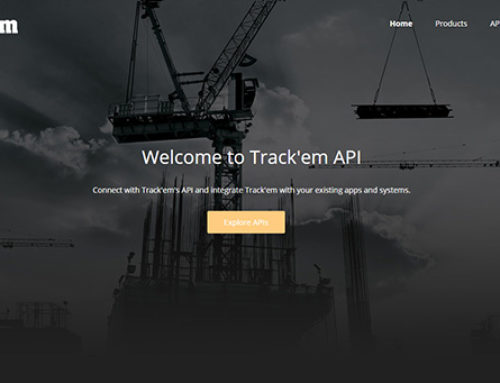How to keep track of tools and equipment
Construction work in the resource sector is complex, expensive and resource-intensive. The meticulous planning required to minimise the risk of exceeding time and budget, whilst imperative, goes to waste when materials cannot be found.
During the execution phase, teams are under continuous pressure to meet timelines while dealing with the unexpected. The unexpected, often resulting in work order variations, is frequently caused by the lack of accurate data of assets, materials and people.
Many engineering companies, contractors and asset owners in the mining, oil and gas industry struggle to keep asset and material information up-to-date.
Most ERP systems stop tracking items once received in a warehouse, providing ZERO VISIBILITY as to where materials/parts/tools/machines/assets are located across the sites. As such, people often revert to using paper for their stocktakes and rely on spreadsheets to keep track of parts, machinery and tools, their inventory levels, status, usage and movements, across multiple locations. Spreadsheets are notoriously unsuitable for this task as they are prone to human error, lack data integrity control, provide very limited collaboration support and don’t update data in real-time.
Sound familiar? You’re not alone.
We hear many stories of materials, tools and equipment being lost or misplaced at critical times during a project. What does this lead to? The likelihood of the project going over budget due to materials having to be reordered, priority freight and equipment hire/reschedule.
Why do tools and equipment go missing?
There are many different reasons why tools and equipment go missing. The most common ones are described in the whitepaper.
The common denominator here is the lack of access to accurate data. Interactions with assets, materials or tools are not kept up-to-date because both organisational and software systems are inadequate. This causes inventory deficits, usage conflicts and leads to time wasted trying to locate something that isn’t where it was expected to be.
What if you could prevent all this? What if you could prevent this wastage and reordering? And what if you could save millions of dollars in time and materials while doing it?
How can you save millions of dollars in time and materials?
This begs the million-dollar question: “How can you save millions of dollars in time and materials?”
Answer: By keeping track of your tools and equipment.
That’s easier said than done though, right? Wrong. There is a way…
First and foremost, before you can keep of track of your tools and equipment, you and your team need to close the information gap around asset and materials tracking. How? By collecting and storing data which is factual, relevant and up-to-date. You need to capture the right data too. But what is the right data?
The data requirements will vary for plant and equipment, tools, materials, PPE and bulk consumables.
What is the right data?
While each project will have its own unique tracking requirements, accessible and accurate data is vital. For most items, the basic information you need is location, status and current custodian. Different types of items, however, will have further data demands. For instance, real-time location tracking may be required for some assets, but not for all.
In construction projects, the following categories have different tracking prerequisites and constraints:

How can you keep track of tools and equipment?
Once you have assessed your data requirements, how can you keep track of tools and equipment? With the right software, systems and means of asset identification (barcodes, RFID, GPS trackers, etc). If you are curious about what tracking technology to use, please have a look at the differences between barcodes and RFID.
Some of the benefits of tracking software include:
What could tool and equipment tracking mean for your projects?
Accurate tracking of your tools, materials and equipment, with a system you can rely on, makes it possible to know where everything is at any given time and in what status. It will help you keep track of inventory levels, let you know who’s checked in or out items, and help you keep track of usage, and inspection and maintenance schedules. Sounds pretty simple, but can you imagine the massive impact this can have on projects if all the information is readily available in a single solution.
It can lead to significant waste reduction, saving millions of dollars in time and materials.
At Track’em, we have tracked more than 10 million items for engineering and construction projects across the world’s largest mining, oil and gas projects, helping assets owners and EPCs deliver projects on time and within budget. In short, we make it easy to track your tools and equipment.
How do we do it? Download our recent whitepaper on ‘Materials and Equipment Tracking in the Resource Sector’ and find out how you too can reap the benefits.




